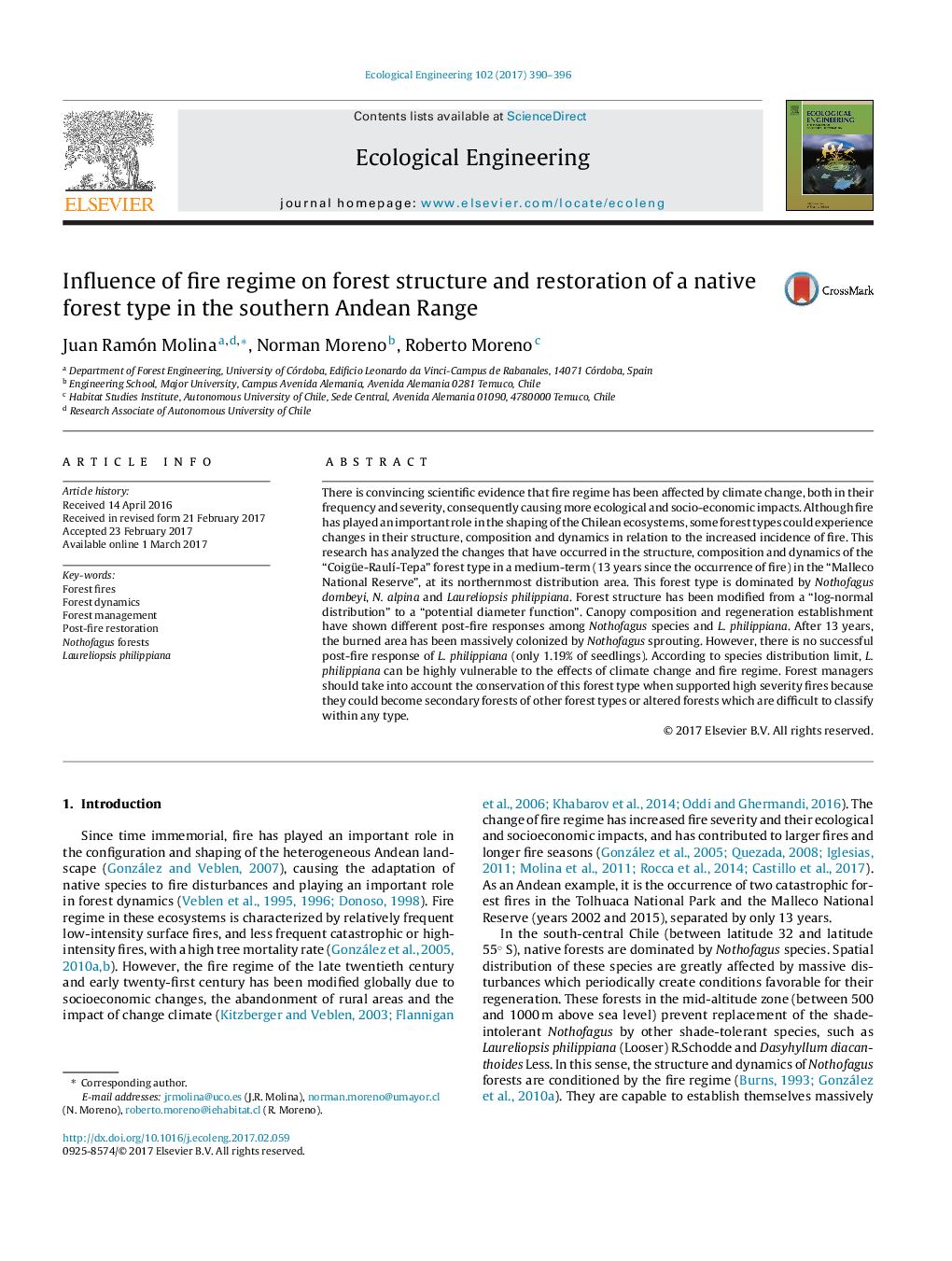| کد مقاله | کد نشریه | سال انتشار | مقاله انگلیسی | نسخه تمام متن |
|---|---|---|---|---|
| 5743783 | 1617997 | 2017 | 7 صفحه PDF | دانلود رایگان |
- Fire frequency and severity has been modified by climate change, causing higher impacts.
- Forest structure and natural dynamics could be affected by the change of fire regime.
- Different post-fire responses have been shown from the same species based on fire severity.
There is convincing scientific evidence that fire regime has been affected by climate change, both in their frequency and severity, consequently causing more ecological and socio-economic impacts. Although fire has played an important role in the shaping of the Chilean ecosystems, some forest types could experience changes in their structure, composition and dynamics in relation to the increased incidence of fire. This research has analyzed the changes that have occurred in the structure, composition and dynamics of the “Coigüe-RaulÃ-Tepa” forest type in a medium-term (13 years since the occurrence of fire) in the “Malleco National Reserve”, at its northernmost distribution area. This forest type is dominated by Nothofagus dombeyi, N. alpina and Laureliopsis philippiana. Forest structure has been modified from a “log-normal distribution” to a “potential diameter function”. Canopy composition and regeneration establishment have shown different post-fire responses among Nothofagus species and L. philippiana. After 13 years, the burned area has been massively colonized by Nothofagus sprouting. However, there is no successful post-fire response of L. philippiana (only 1.19% of seedlings). According to species distribution limit, L. philippiana can be highly vulnerable to the effects of climate change and fire regime. Forest managers should take into account the conservation of this forest type when supported high severity fires because they could become secondary forests of other forest types or altered forests which are difficult to classify within any type.
Journal: Ecological Engineering - Volume 102, May 2017, Pages 390-396
